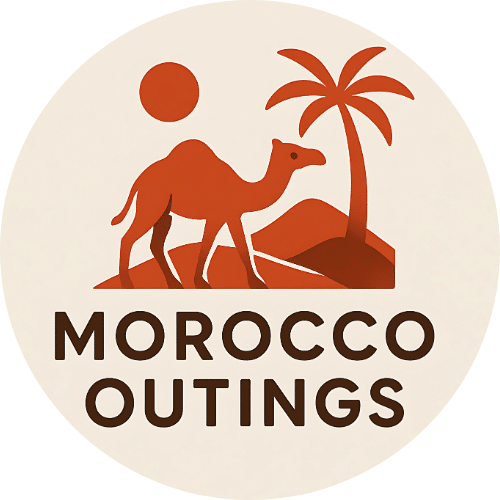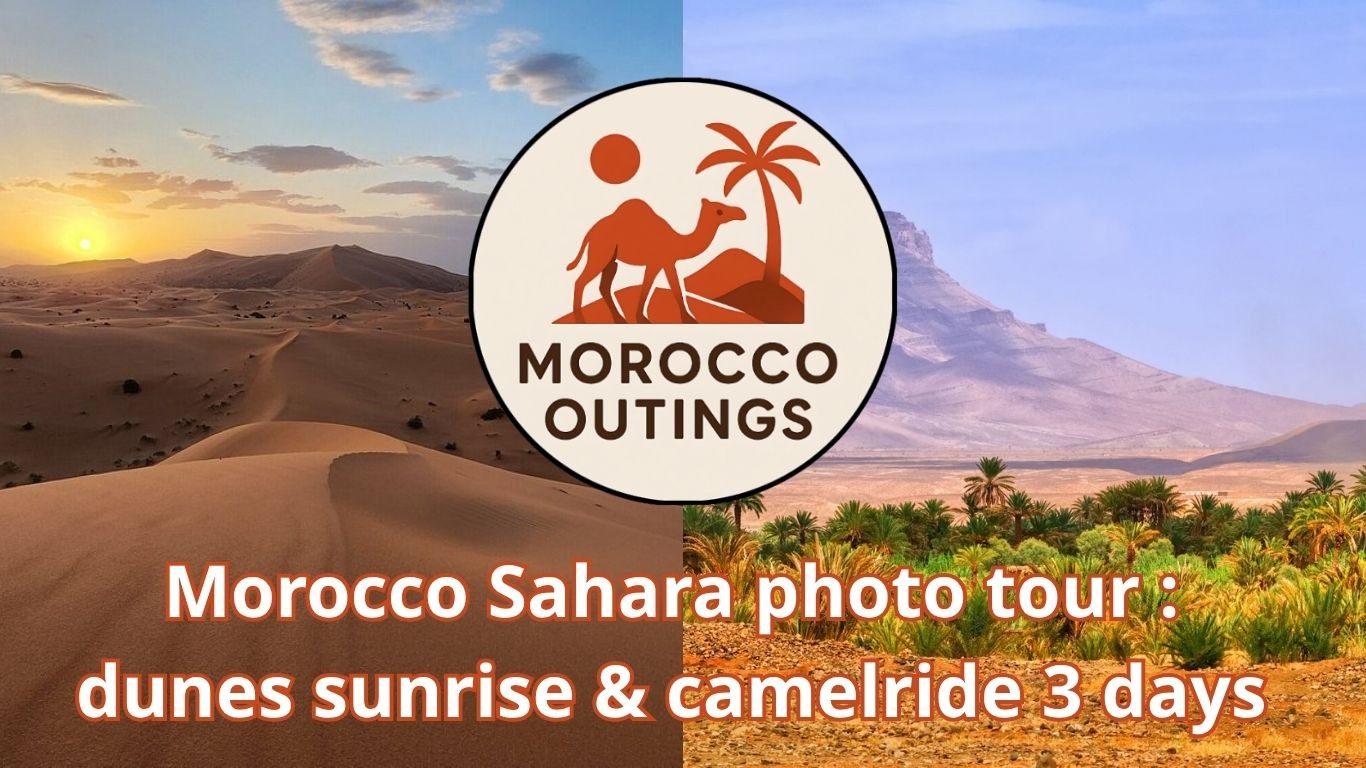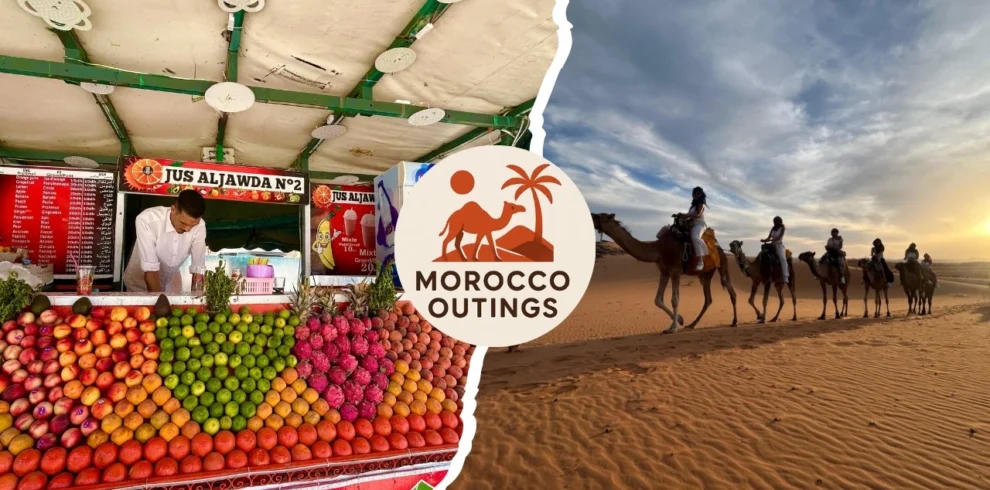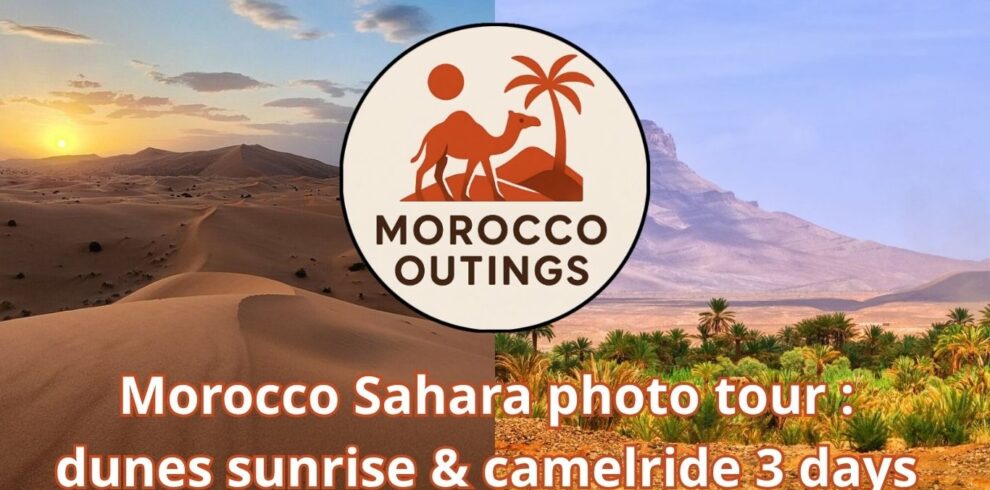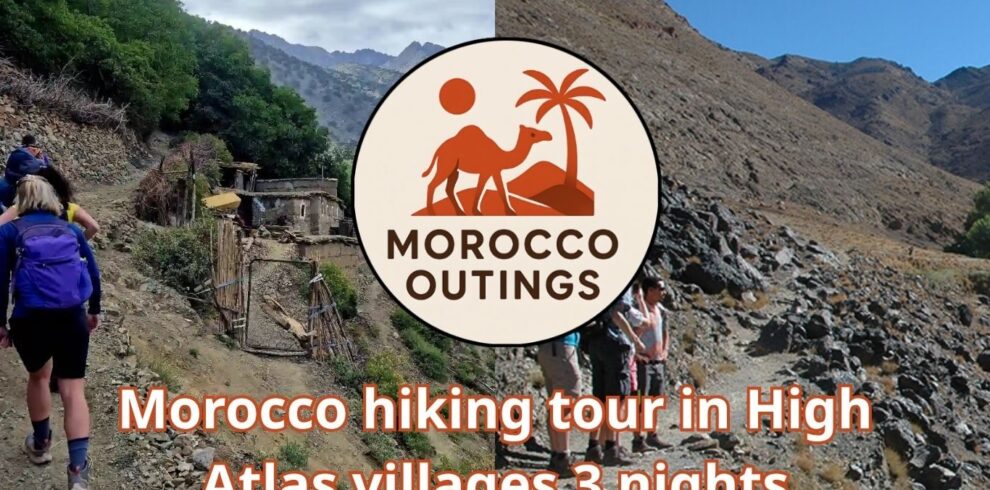Embark on an unforgettable Morocco Sahara Photo Tour, a 3-day journey crafted for travelers and photographers who seek to capture the soul of the desert, the warmth of Berber hospitality, and the stunning contrasts of Morocco’s natural landscapes. From the bustling charm of Marrakech to the tranquil silence of the Erg Chebbi dunes, this experience blends photography, adventure, and authentic culture in perfect harmony.
Your journey begins as you travel across the High Atlas Mountains, winding through dramatic valleys and passing historic kasbahs like Aït Benhaddou, a UNESCO World Heritage Site that has graced countless films. Along the way, every curve reveals breathtaking panoramas perfect for landscape photography, where red earth meets deep blue skies. As the sun lowers, you’ll arrive in the Dades Valley, a land of rugged cliffs and winding rivers, capturing the shifting hues of Morocco’s south before your desert adventure begins.
The following day unfolds in the heart of the Sahara Desert, where you’ll experience an iconic camel ride across vast golden dunes under the changing desert light. As the sun sets, you’ll photograph the surreal play of shadows and colors while the horizon glows in shades of gold and amber. A night under the stars in a luxury desert camp offers both serenity and inspiration—perfect for long-exposure shots and Milky Way photography.
Your final morning is devoted to the sunrise over the dunes, a magical moment when the desert awakens. You’ll then visit nomadic communities and return to Marrakech, carrying not just photos but a deep connection to Morocco’s timeless beauty and its desert spirit.

Morocco Sahara Photo Tour: Dunes, Sunrise & Camel Ride – 3 Days
Tour Overview
Embark on the Morocco Sahara Photo Tour and experience the raw beauty of the desert through your lens. Journey from Marrakech across the Atlas Mountains to the majestic Erg Chebbi dunes, capturing breathtaking sunrises, glowing sunsets, and timeless desert landscapes. Enjoy authentic moments with local nomads, ride gentle camels across golden sands, and spend the night in a luxury desert camp under a star-filled sky. Perfect for travelers and photography enthusiasts seeking light, texture, and emotion in Morocco’s southern wilderness.
Detailed Itinerary
| Day | Activity | Details |
|---|---|---|
| Day 1 | Journey to the Desert: From Marrakech to the Golden Dunes | Begin with a scenic drive through the Atlas Mountains via the famous Tizi n’Tichka Pass. Stop for photography at Aït Benhaddou Kasbah, a UNESCO site rich in light and shadow contrasts. Continue along the cinematic route to the Dades Valley, with time for golden-hour photography and an overnight stay in a charming local guesthouse. |
| Day 2 | Sahara Essence: Merzouga, Camel Ride & Sunset Photography | Head towards the vast Erg Chebbi dunes near Merzouga. Capture soft desert tones and shifting dunes under the afternoon light. Embark on a camel ride at sunset for a unique perspective as the sands glow in amber hues. Arrive at your luxury desert camp for dinner, stargazing, and night photography under the Milky Way. |
| Day 3 | Sunrise Over the Sands & Return via Desert Villages | Wake before dawn for a sunrise photography session across the dunes. Observe how the light transforms the desert into shades of gold and rose. Visit local nomads for a cultural insight and candid portraits, then journey back through the desert road with scenic stops before returning to Marrakech in the evening. |
What’s Included:
2 nights accommodation (guesthouse & luxury desert camp)
Private 4×4 air-conditioned vehicle with driver-guide
Guided camel trek and photography sessions
Daily breakfast, dinner, and bottled water
Professional assistance for sunrise and sunset shooting
Cultural visit to nomadic families
All local taxes and transfers
What’s Not Included:
Lunches and personal snacks
Photography equipment and gear rentals
Travel insurance (recommended)
Tips for guides and camp staff
Optional activities not mentioned in the program
Day 1 – Journey to the Desert: From Marrakech to the Golden Dunes
Departure from Marrakech – Gateway to the South
Your Morocco Sahara Photo Tour begins early in the morning from the vibrant city of Marrakech, where the Atlas Mountains rise majestically beyond the city walls. As your private 4×4 vehicle leaves the Red City, the landscape transforms from lush plains into winding mountain roads that cut through ancient valleys. Along the way, your driver and guide share insights about Berber traditions, caravan routes, and the rich history that connects Marrakech to the deep south. The crisp mountain air, dotted villages, and terraced fields create endless opportunities for photography as the first rays of light touch the peaks of Tizi n’Tichka Pass, Morocco’s highest mountain road at 2,260 meters.
The drive offers a sensory feast — the scent of pine trees, the cool breeze sweeping through the valleys, and the breathtaking contrast between green terraces and ochre cliffs. Small roadside stops invite you to stretch your legs, sip fresh mint tea, and capture portraits of local villagers going about their morning routines. Each moment is a glimpse into the mountain life that has remained timeless for generations.
Aït Benhaddou – The Iconic Kasbah of Southern Morocco
By midday, you arrive at the legendary Aït Benhaddou, a UNESCO World Heritage site and one of the most celebrated kasbahs in Morocco. Rising from the desert plains like a golden fortress, this ancient Ksar (fortified village) has served as the backdrop for countless films including Gladiator, Lawrence of Arabia, and Game of Thrones.
Here, your guide leads you through the narrow earthen alleys and passageways that connect traditional homes made of clay and straw. The texture and color of the walls shift beautifully under the desert sun — a dream for photographers capturing Morocco’s architectural heritage. From the upper terraces, the panoramic view of the Ounila Valley stretches endlessly, revealing a patchwork of palm groves and desert cliffs.
You’ll also visit small artisan workshops inside the kasbah, where locals still craft silver jewelry, woven carpets, and clay pottery using centuries-old techniques. A traditional lunch is served at a terrace restaurant overlooking the Ksar, offering regional specialties like tagine with saffron and preserved lemon, and freshly baked Berber bread — flavors that blend perfectly with the scent of the desert wind.
Ouarzazate – The Gateway to the Sahara
After lunch, the journey continues toward Ouarzazate, often called the “Gateway to the Sahara.” This city is known for its desert architecture and as a hub for international film production. You’ll pass the Atlas Film Studios, one of the largest in the world, where props and sets from iconic desert films still stand. A short stop at the Taourirt Kasbah reveals a masterpiece of southern Moroccan architecture — a maze of courtyards, watchtowers, and intricate earthen designs that once housed the powerful Glaoui family.
The light here is particularly magical in the late afternoon, ideal for photography sessions capturing the interplay of sun and shadow on the kasbah’s walls. A guided walk through the old quarter offers a chance to interact with local artisans and explore small shops selling spices, argan oil, and desert crafts.
Skoura Oasis – Palms, Kasbahs & Golden Light
The road eastward leads into the Skoura Oasis, one of the most picturesque valleys in the southern Atlas region. Known as the “Valley of a Thousand Kasbahs,” Skoura offers lush palm groves surrounded by traditional mud-brick architecture. You’ll stop at the Amridil Kasbah, a perfectly preserved fortress dating back to the 17th century, to explore its courtyards and towers that echo Morocco’s rich desert heritage.
Walking among the date palms, you can photograph the contrast of deep green foliage against red earthen walls — a visual signature of Morocco’s oases. The soft afternoon light makes it one of the best spots for landscape photography, while encounters with local farmers tending to their fields give insight into sustainable desert agriculture.
Arrival in Dades Valley – The Canyon of Colors
As evening approaches, your journey culminates in the stunning Dades Valley, a dramatic landscape carved by wind and water over millennia. The winding road climbs through red cliffs and rock formations famously known as the “Monkey Fingers,” shaped by centuries of erosion. Here, you’ll pause to photograph the golden hues of sunset reflecting on the rugged canyon walls — a breathtaking finale to your first day.
Your accommodation tonight is a charming Berber guesthouse overlooking the valley, built in traditional style with earthen walls and panoramic terraces. After settling in, you’ll enjoy a hearty dinner featuring local specialties — couscous with slow-cooked vegetables and mint tea under the stars. The silence of the valley, broken only by the distant call of night birds, creates the perfect setting to review the day’s photographs and prepare for the next leg of your Morocco Sahara Photo Tour.
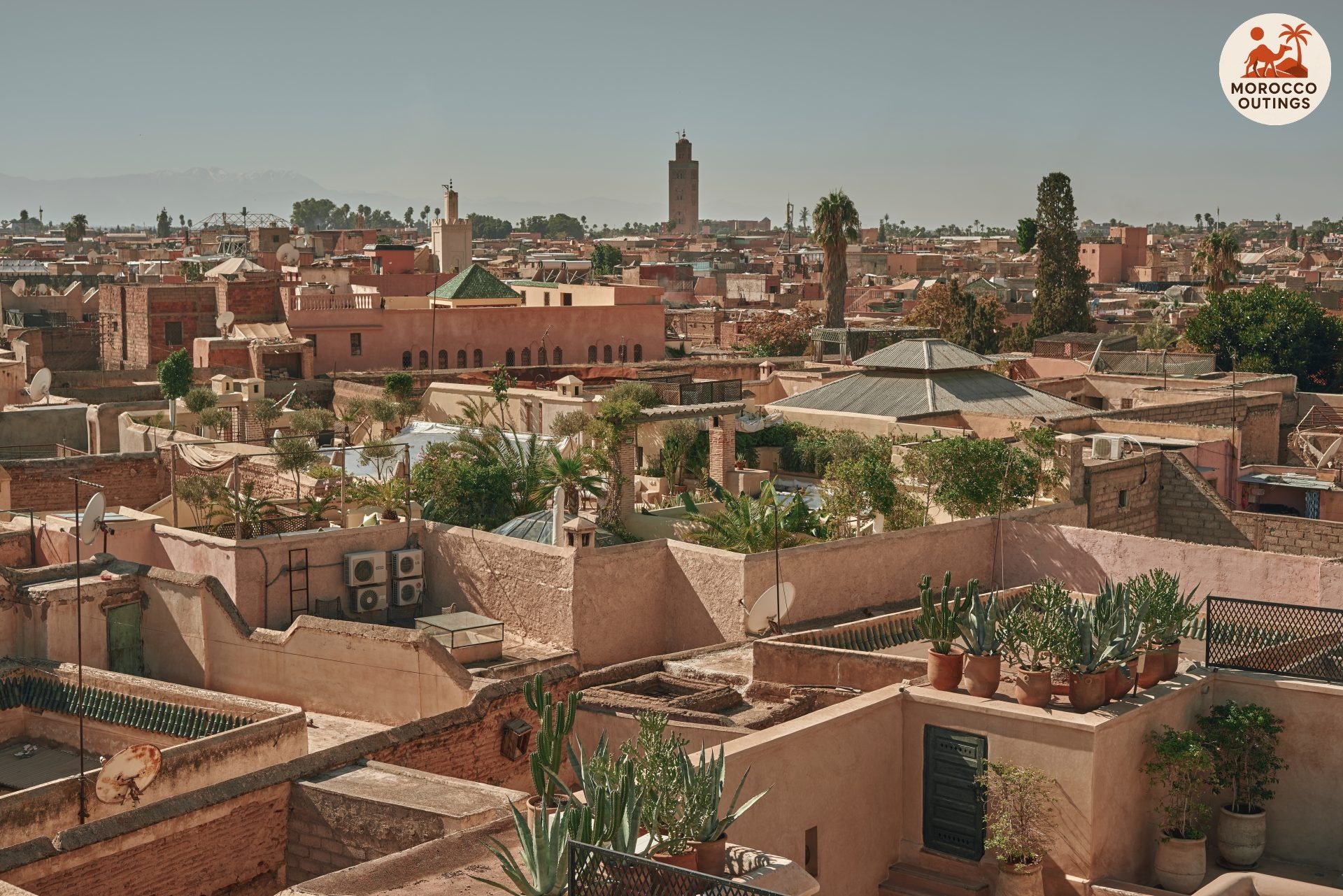
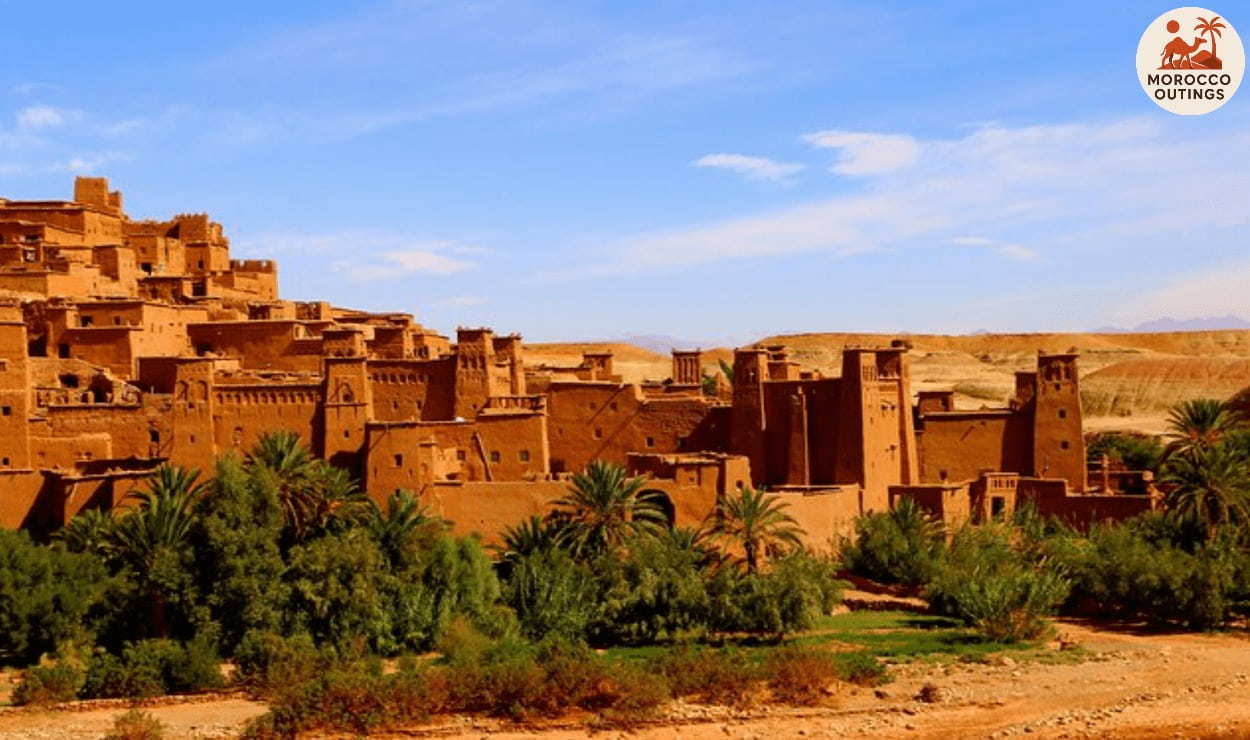
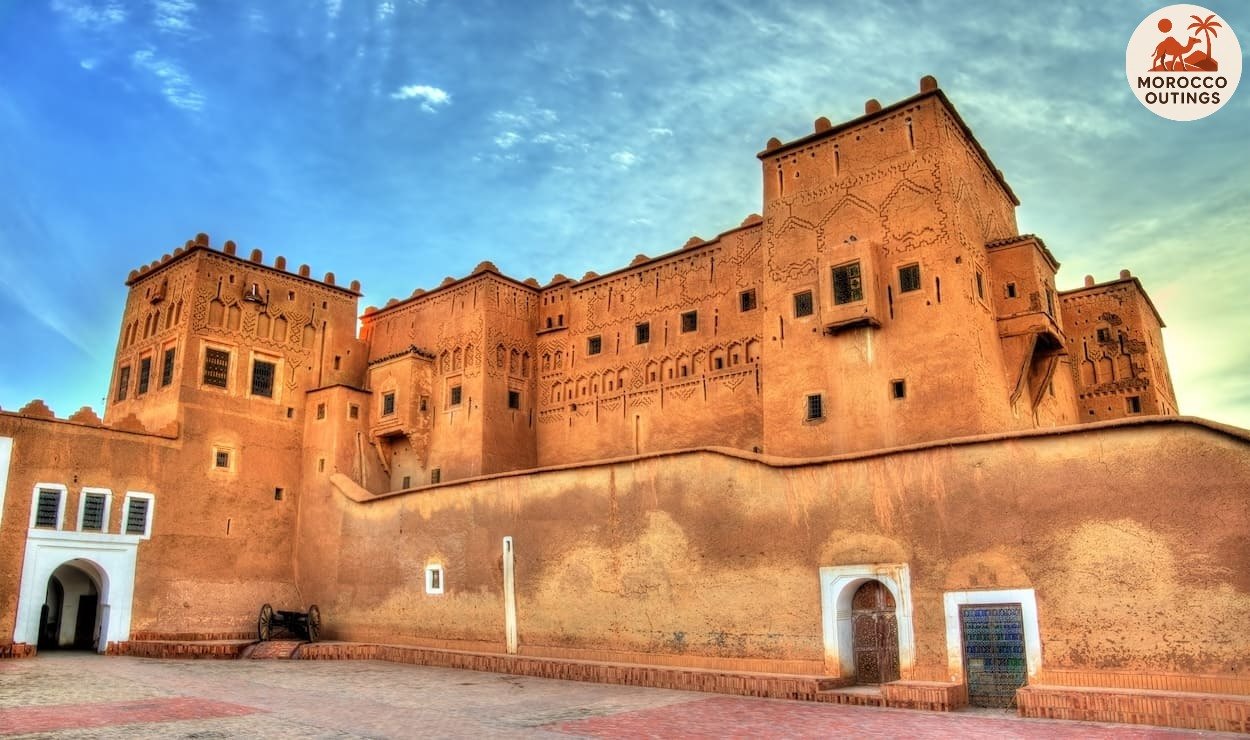
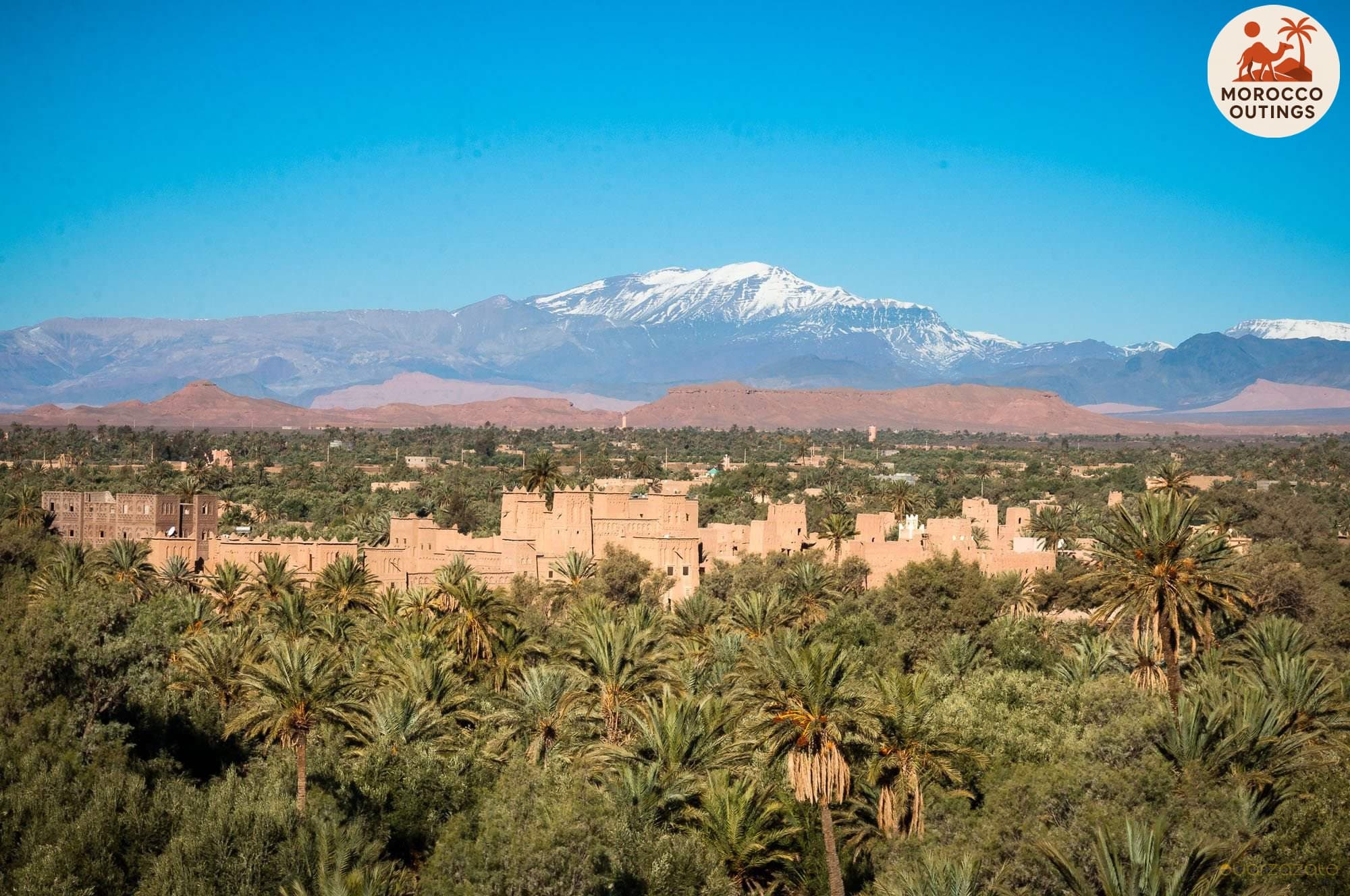
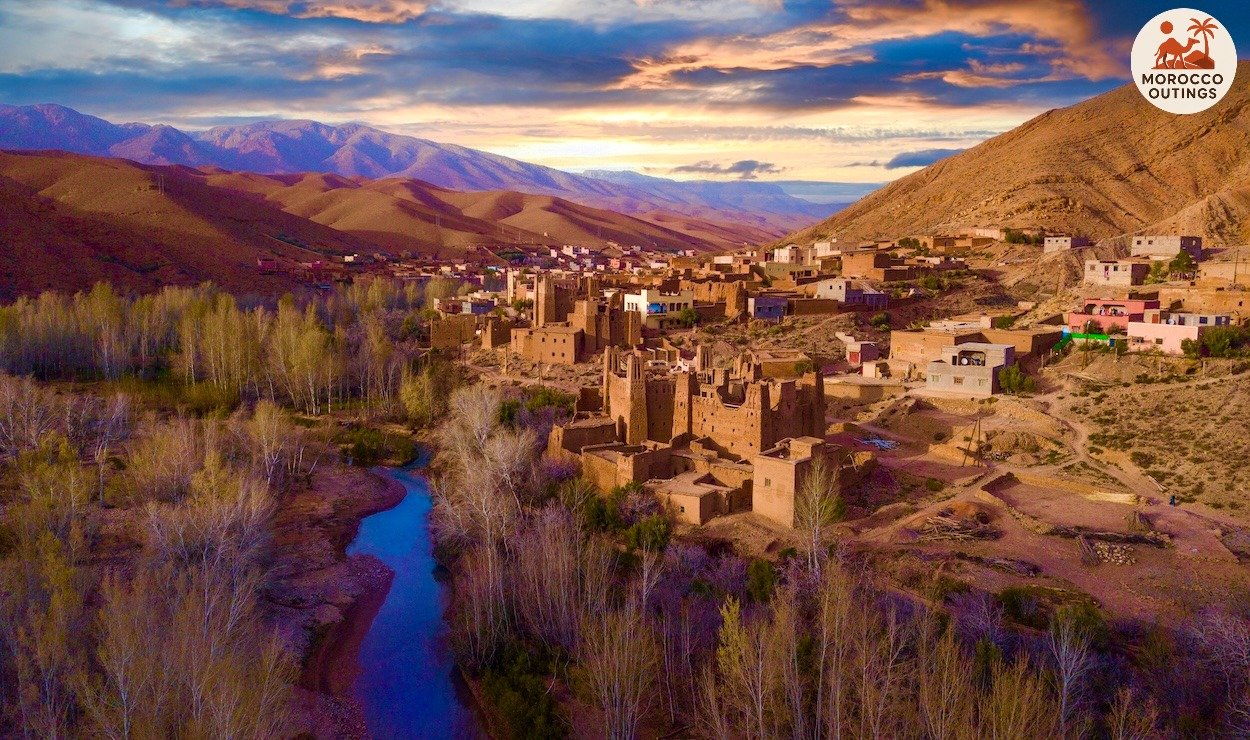
Day 2 – Sahara Essence: Merzouga, Camel Ride & Sunset Photography
Morning in the Valley – From Dades to the Edge of the Sahara
The second day of your Morocco Sahara Photo Tour begins with the first light of dawn spilling over the cliffs of the Dades Valley. After a traditional breakfast of Berber bread, local honey, and freshly brewed mint tea, the group departs toward the desert, following the legendary Road of a Thousand Kasbahs. The drive is both scenic and immersive — a living gallery of Morocco’s geological and cultural diversity.
You’ll pass through small Berber villages surrounded by date palms and almond trees, where shepherds guide their flocks through the valleys. Stops along the way allow you to capture photographic compositions of red canyons, ancient kasbahs, and the rhythm of rural life. The golden morning light reflects beautifully on the mud-brick walls and lush oases, creating natural contrasts that every photographer dreams of.
As you descend toward Tinghir, the landscapes shift again, revealing the green ribbon of the Todgha Valley. Terraced gardens, fig orchards, and pomegranate trees stretch along the riverbanks, framed by dramatic canyon walls — a prelude to the Sahara that awaits beyond.
Todgha Gorge – Nature’s Majestic Gateway
Your next stop is the world-famous Todgha Gorge, one of the most striking natural wonders in southern Morocco. Towering limestone cliffs rise nearly 300 meters high, their surfaces glowing in shades of amber and rose under the desert sun.
A gentle walk along the narrow canyon floor offers endless possibilities for landscape and portrait photography. You can capture the reflection of the sky in the shallow stream, the play of light and shadow across the rock formations, and the serene moments of local families enjoying picnics by the water.
Your guide explains the geological history of the gorge — once a riverbed carved over millennia — while emphasizing the importance of the oasis ecosystem. The area is perfectly safe for visitors, and local guides from Tinghir ensure smooth passage through the trails. This peaceful walk also offers a cultural connection, as you may meet artisans selling handwoven carpets or nomadic jewelry made from desert silver.
After photographing this stunning canyon, you’ll enjoy a relaxed lunch at a local restaurant overlooking the gorge, savoring dishes like Berber omelet with fresh herbs and vegetable couscous, prepared with locally sourced ingredients.
Erfoud – Gateway to the Sahara
Continuing southeast, the road unfolds toward Erfoud, known as the “Gateway to the Sahara.” The landscape begins to flatten and shift into warm desert tones — ochre, gold, and soft beige — signaling your approach to the Erg Chebbi dunes near Merzouga.
Erfoud is famous for its fossil workshops, where skilled artisans polish ancient marine fossils extracted from local quarries. A short visit offers a glimpse into this fascinating craft — perfect for close-up macro photography of intricate stone patterns and fossilized shells.
As you continue your journey, the scent of desert wind begins to fill the air. The last stretch to Merzouga feels almost cinematic: long straight roads cutting through barren plains, camels grazing in the distance, and the first glimpse of golden dunes shimmering under the afternoon sun.
Merzouga – Camel Ride into the Golden Dunes
Upon reaching Merzouga, the gateway to Erg Chebbi, you’ll meet your local camel guide who will lead your camel caravan into the desert. After a short briefing on safety and comfort, you’ll mount your camel and begin the slow, rhythmic journey across the sand.
This moment is the soul of the Sahara experience — the gentle sway of the camel, the whisper of the wind, and the changing hues of the dunes as the sun begins to lower. Your guide selects the most scenic routes for photography sessions, stopping at key points to capture the silhouettes of the caravan against the glowing horizon.
Halfway through the ride, you’ll pause atop a high dune to enjoy the serenity of the desert. The soft golden light and endless curves of sand create compositions of pure natural beauty. Here, you’ll also learn desert navigation techniques and hear stories of nomadic Berber tribes who once crossed these same dunes under the stars.
Sunset Photography & Desert Magic
As the sun begins its descent, you’ll arrive at a secluded area chosen for its panoramic view — a perfect location for sunset photography. The colors of the Erg Chebbi dunes shift from gold to fiery orange, then to deep red and violet, offering a rare play of tones found only in this part of Morocco.
Your guide assists with framing techniques for wide-angle and silhouette shots, ensuring you capture professional-quality images of the desert’s most dramatic moment — the setting sun over infinite dunes. The silence of the Sahara at this hour is profound; the only sounds are the wind brushing the sand and the distant call of desert birds returning to their nests.
Overnight in a Luxury Desert Camp
As twilight settles, you reach your luxury desert camp, hidden among the dunes and illuminated by the warm glow of lanterns. After a refreshing welcome drink, you’ll settle into your private tent — furnished with comfortable bedding, Berber rugs, and handcrafted decor blending traditional style with modern comfort.
Dinner is served under the stars: a candlelit meal featuring tagine with apricots and almonds, freshly baked bread, and sweet mint tea. As local musicians play soft gnawa rhythms around the campfire, you can relax and reflect on the day’s journey, reviewing your photographs and sharing stories with fellow travelers.
Later, as the night deepens, you’ll step away from the fire to gaze at one of the clearest night skies on earth. The Milky Way stretches across the heavens, creating an unforgettable opportunity for night-sky photography. The cool desert breeze, the scent of sand, and the silence all combine to create a moment of pure stillness — the true essence of the Sahara.
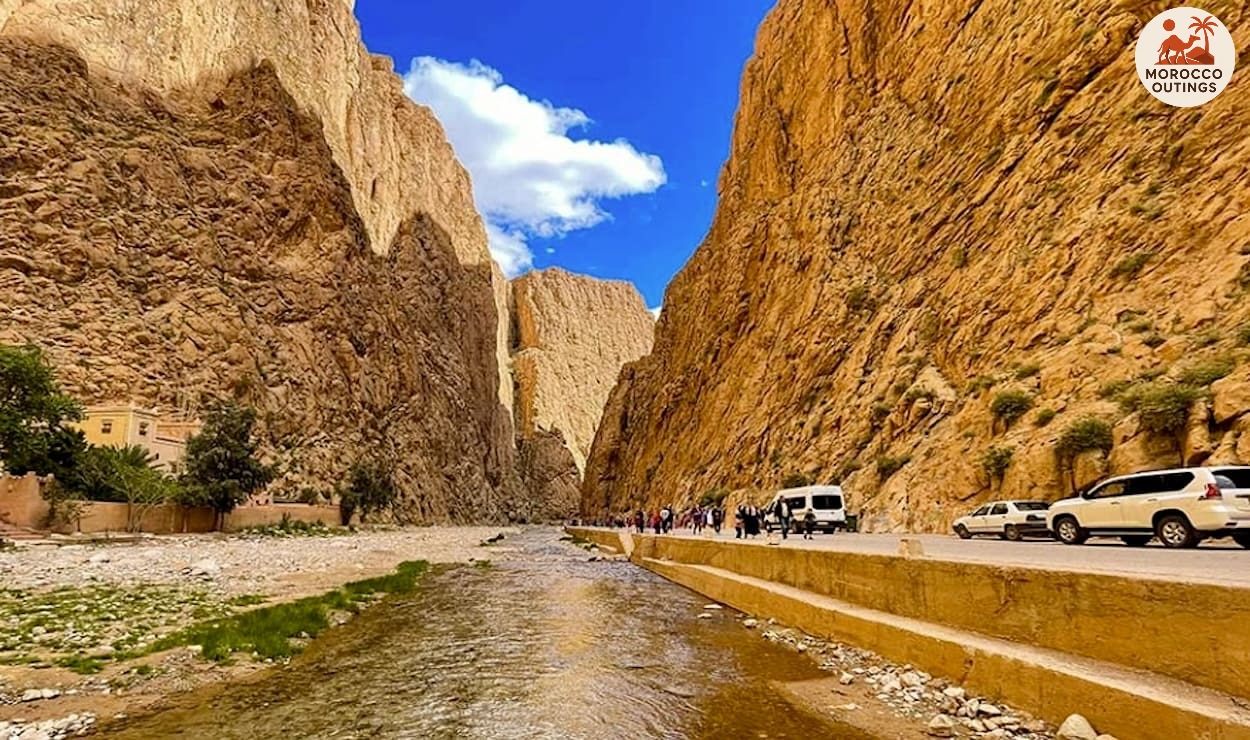

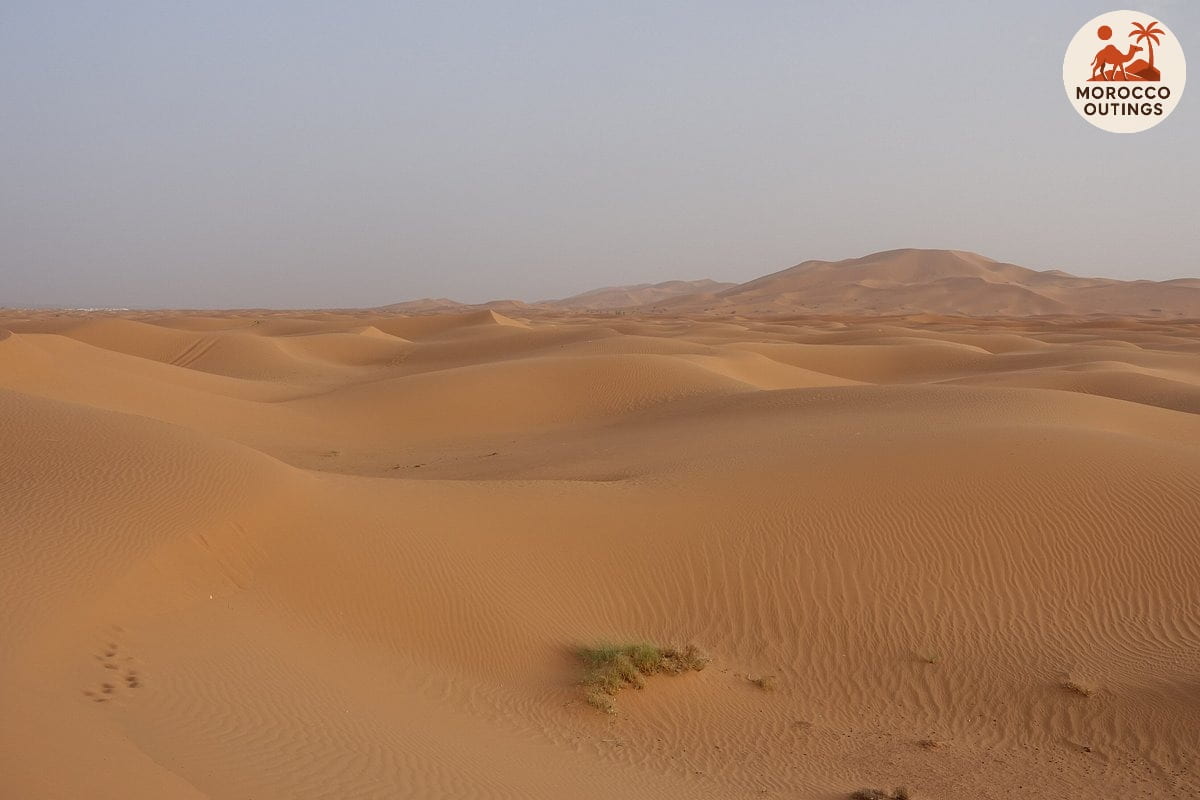
Day 3 – Sunrise Over the Sands & Return via Desert Villages
Sunrise Over the Dunes – The Magic of Morning Light
The final morning of your Morocco Sahara Photo Tour begins before dawn, in the heart of the Erg Chebbi dunes near Merzouga. The silence of the desert at this hour is absolute — the only sound is the soft rustle of sand shifting underfoot as you climb to the top of a dune for your sunrise photography session.
As the first rays of light break the horizon, the desert transforms into a living painting. Shades of gold, rose, and amber sweep across the vast dunes, casting long shadows and revealing delicate wind-carved patterns. This is a photographer’s dream — the purest and most magical light of the Sahara.
Your guide, experienced in desert photography, helps position you for the best compositions: silhouettes of camels walking along the ridge, close-ups of the texture of the sand, and wide panoramic shots that capture the immensity of the Sahara Desert. The air is crisp and cool, the wind still gentle, and the sense of tranquility unmatched anywhere else on earth.
After capturing the perfect shots, you descend the dunes for a peaceful desert breakfast served at the camp — freshly baked flatbread, dates, yogurt, and aromatic mint tea. The morning feels timeless, as if the world beyond these dunes has paused to let you absorb the serenity of the desert one last time.
Nomadic Life – Visit to Desert Families
After breakfast, your journey continues with a short off-road excursion toward a nearby nomadic settlement, where you’ll meet one of the Aït Atta Berber families who have lived for generations between the dunes and the dry plains.
This visit offers a rare glimpse into traditional nomadic life, and it’s handled with deep respect for local customs. You’ll see their black goat-hair tents, handmade by the women of the family, and learn how these resilient people adapt to the harsh desert environment.
They’ll show you how they make bread baked under the sand, how they store water, and how their camels and goats form the core of their livelihood. You may even share a cup of strong, sweet Moroccan tea, a gesture of hospitality that is sacred in the desert.
For photographers, this moment is intimate and emotional — a chance to capture authentic portraits of daily desert life: a child playing beside the tent, a woman weaving wool, or an old nomad gazing at the horizon. Every detail speaks of endurance, simplicity, and harmony with nature.
Before leaving, you’ll have the opportunity to purchase handcrafted souvenirs made by the nomad women — small woven bracelets or traditional scarves — authentic reminders of your time among the people of the Sahara.
Desert Villages – From Merzouga to the Draa Valley
Departing from Merzouga, you begin the long but captivating drive back toward Marrakech, retracing part of the ancient caravan route once used by traders carrying salt, gold, and spices. Along the way, the scenery constantly shifts — from dunes to rocky plateaus, and from desert plains to fertile valleys.
Your first stop is in the small village of Rissani, a historic desert town known for its traditional market and as the birthplace of the Alaouite dynasty. Here, you’ll stroll through the souks, where locals trade dates, spices, and colorful fabrics. The market’s colors and energy make for incredible street photography opportunities.
You’ll also visit the Mausoleum of Moulay Ali Cherif, an important spiritual site that connects Morocco’s royal lineage to this quiet desert town. The architecture, with its green-tiled roofs and carved wooden doors, is a visual gem for close-up photography.
From Rissani, the route continues through Alnif and Nkob, where clusters of mud-brick kasbahs rise against the horizon, and palm groves line the valleys. Each turn of the road reveals new patterns of light and texture — landscapes untouched by time, offering countless chances for capturing the true essence of Southern Morocco.
You’ll pause for lunch in a small family-run guesthouse overlooking the Draa Valley, where the shade of date palms offers a cool respite. Enjoy dishes like vegetable tagine, fresh olives, and orange slices with cinnamon, while listening to the sound of the wind passing through the palm fronds.
Crossing the High Atlas – Return to Marrakech
In the afternoon, the road leads north again, climbing toward the High Atlas Mountains. The transition from desert to mountain is gradual yet breathtaking. As the vehicle ascends, you’ll see shepherds tending flocks, terraced fields, and Berber villages clinging to the hillsides — vivid reminders of Morocco’s incredible diversity.
Stops along the way provide panoramic viewpoints perfect for your final photographs: winding mountain passes, sharp ridgelines, and the soft colors of dusk settling over the valleys. The journey is long but safe and comfortable, with breaks for tea and rest along the route.
By late evening, you arrive once again in Marrakech, where the familiar red walls and distant call to prayer mark your return to civilization. Depending on your schedule, you may enjoy a short evening walk through Jemaa el-Fnaa Square, now glowing under lantern light — a poetic end to your desert adventure.
Farewell Reflections – The End of a Journey, the Beginning of Memory
Your Morocco Sahara Photo Tour concludes here, but the images you’ve captured — the golden dunes of Erg Chebbi, the faces of Berber nomads, the infinite starlit sky — will stay with you forever.
Each frame tells a story of connection: between human and landscape, between past and present, and between traveler and guide. As you transfer back to your hotel or the airport, your guide will share final insights and farewell wishes, leaving you not just with photographs, but with an emotional portrait of Morocco’s soul.
The desert teaches a rare kind of silence — one that follows you long after you leave. And as the memory of sunrise over the dunes fades into the distance, you realize that the Sahara never truly ends; it lives on in your lens, your heart, and your longing to return.
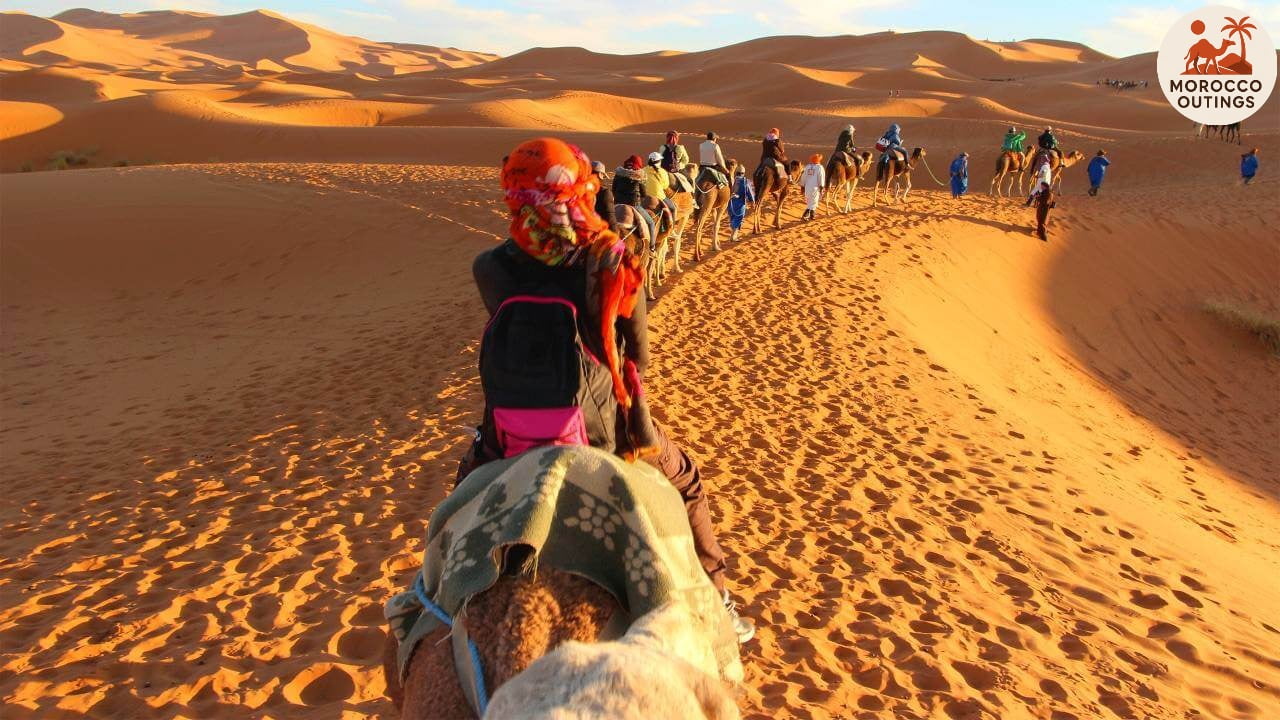


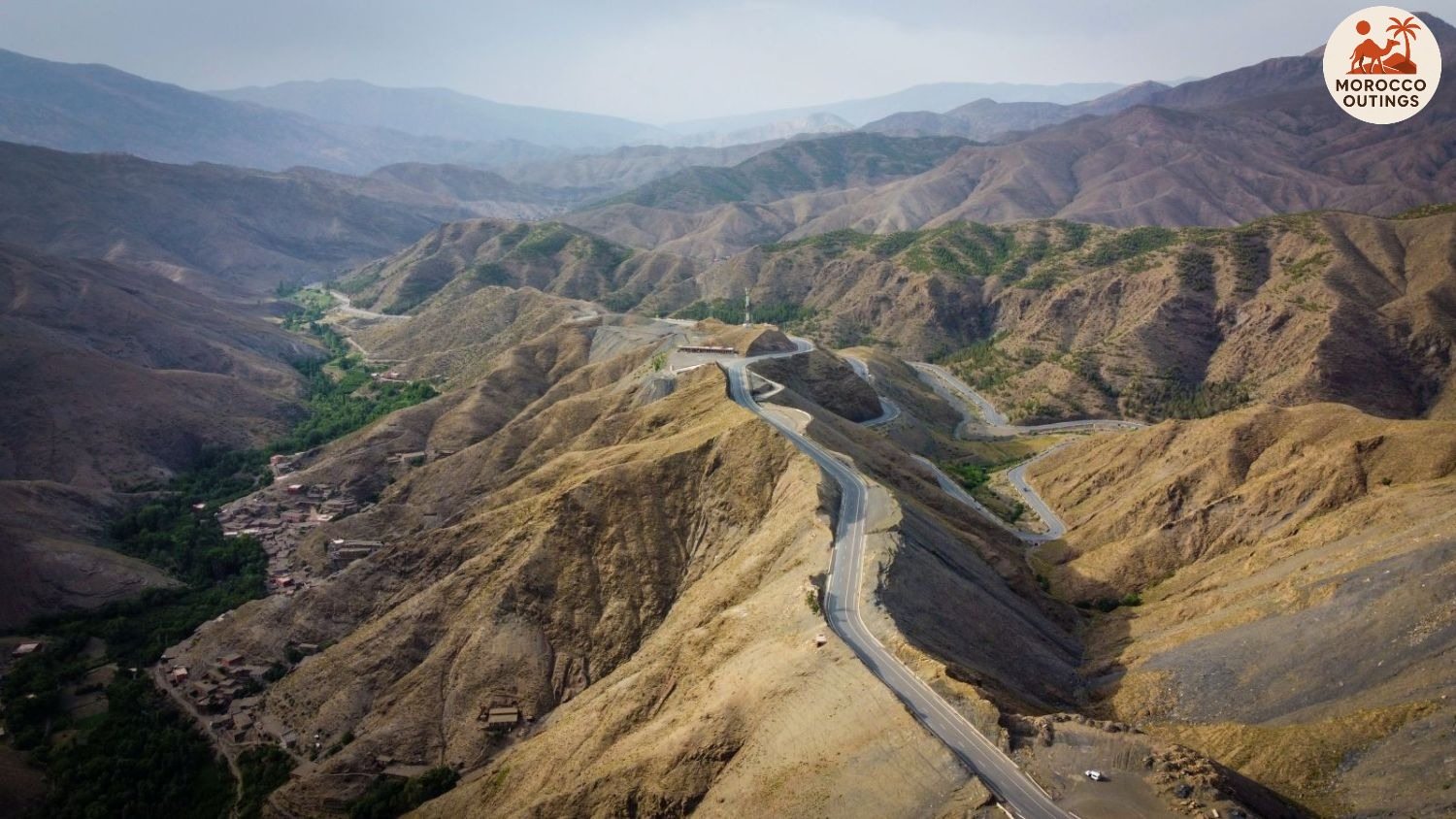
Travel Tips & Recommendations
-
Best Time to Visit: Ideal months are October to April, when temperatures are mild, skies are clear, and lighting conditions are perfect for photography.
-
What to Pack: Bring light breathable clothes, a warm jacket for desert nights, scarf or turban, sunscreen, sunglasses, and comfortable shoes for sand walking.
-
Photography Gear: A DSLR or mirrorless camera, wide-angle and telephoto lenses, extra batteries, and a tripod for sunrise and night-sky shots. Sand protection for lenses is essential.
-
Camel Ride Comfort: Wear long pants and closed shoes for the ride; follow the guide’s instructions for balance and safety while mounting or dismounting the camel.
-
Health & Safety: Stay hydrated at all times; drink bottled water and avoid excessive sun exposure during midday hours.
-
Local Etiquette: Always ask permission before photographing locals, especially in villages or markets. Respect cultural customs and dress modestly.
-
Cash & Connectivity: ATMs are limited in desert towns; carry sufficient cash (dirhams). Mobile signal can be weak beyond Erfoud and Merzouga, so plan offline maps.
-
Desert Nights: Temperatures can drop sharply — pack a fleece or thermal layer even if daytime feels hot.
-
Eco-Responsibility: Avoid leaving any waste in the desert. Respect local wildlife and preserve the natural silence of the dunes.
-
Meals & Water: Meals provided at lodges and camps are fresh and hygienic. Notify your guide in advance of any dietary preferences or allergies.
-
Tipping: Tipping is appreciated for drivers, guides, and camel handlers — about 10–15% of the service value is fair and respectful.
-
Travel Insurance: Recommended for all travelers, covering medical emergencies and camera equipment.
-
Respect Prayer Times: In small desert villages, be mindful of the call to prayer — pause conversations or photography out of courtesy.
-
Night Photography Tip: Use manual focus and long exposure to capture the Milky Way — desert skies offer incredible clarity with no light pollution.
-
Return Trip Readiness: Keep snacks, water, and power banks handy for the long drive back to Marrakech (8–9 hours).
Book Your Desert Dream Today
Step beyond ordinary travel and capture the soul of the Sahara.
Join our 3-day Morocco Sahara Photo Tour — where every sunrise paints a masterpiece, every camel ride leads you deeper into golden silence, and every frame tells a story of timeless beauty.
This journey isn’t just a trip — it’s an immersion into desert light, Berber culture, and adventure.
From the cinematic landscapes of Aït Benhaddou to the rolling dunes of Merzouga, your camera will dance between shadow and glow, capturing the purest essence of Morocco.
Whether you’re a professional photographer or a passionate explorer, this tour is crafted for those who seek more than a destination — they seek emotion, authenticity, and memory.
Limited spots available — our small-group format ensures personal attention, exclusive photography sessions, and comfort from start to finish.
Reserve your seat today and let the desert unveil its secrets before your lens.
Your next great shot — and your next unforgettable memory — await under the Moroccan sun.
